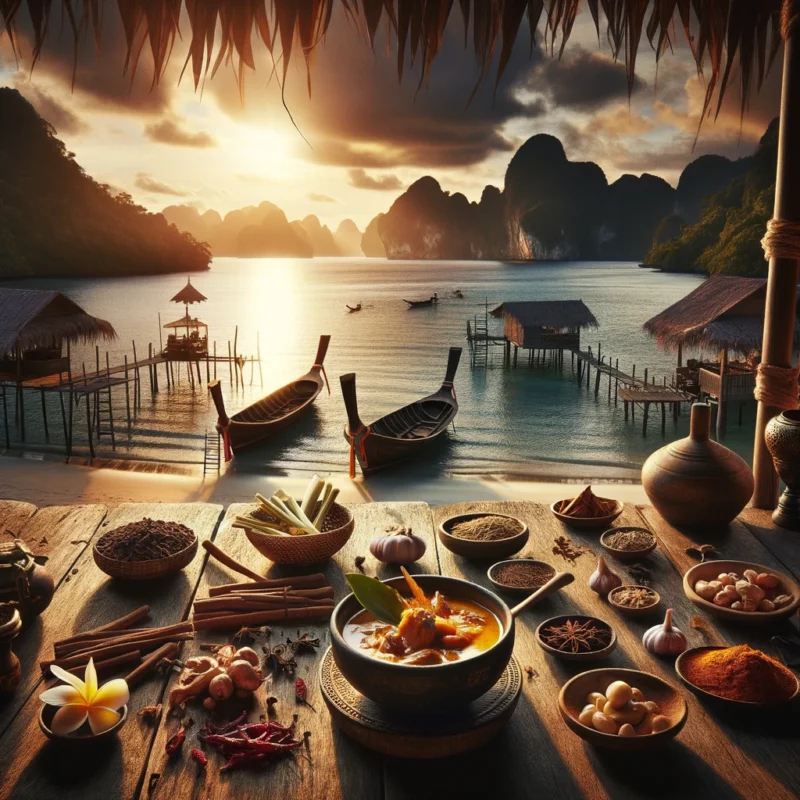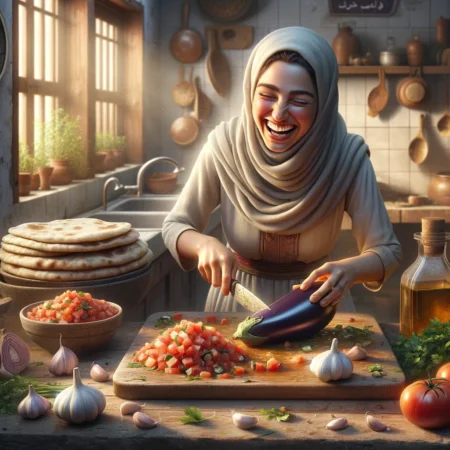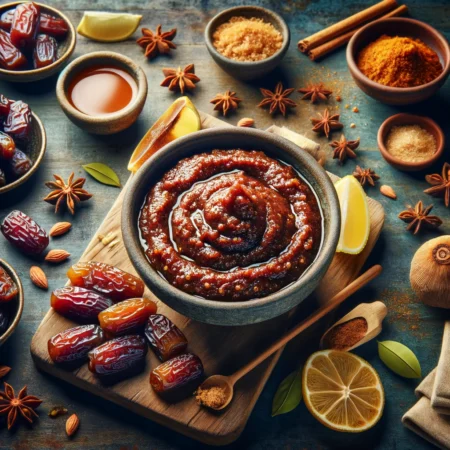The first time I tasted Massaman curry, I was on the southern tip of Thailand, nestled in a rickety wooden chair, surrounded by the raucous laughter of locals and the soothing hum of the Andaman Sea. That first bite was a revelation. It was spicy, rich, fragrant, with an undeniable depth of flavor. And as the spices danced on my tongue, I was left wondering: How did such a richly layered dish come to be in this corner of the world?
Massaman curry, unlike the other staples of Thai cuisine, carries with it an air of mystery. Its flavors hint at a journey beyond Thailand’s borders. Dig a little deeper, and you’ll uncover a tale of trade, conquest, and fusion that mirrors the turbulent history of Southeast Asia.
While Thailand has a proud culinary tradition, Massaman curry isn’t wholly Thai. Its roots trace back to the 17th century, to the bustling trade routes that crisscrossed the Indian Ocean. Sailing these seas were the mighty Persians, traders par excellence, who brought with them not just goods but also a rich tapestry of flavors.
Enter the central player in our tale: the Muslim merchants. As they sailed eastward, they brought with them the deep, rich spices of the Middle East and India. Cardamom, cloves, cumin, star anise – all found their way into the markets of Ayutthaya, the ancient capital of Thailand.
The Thais, ever the culinary innovators, took these spices and blended them with their own rich array of ingredients: lemongrass, galangal, tamarind, and shrimp paste. The result? A curry paste that was both familiar and exotic, a melange of flavors that spoke of far-off lands and age-old traditions. The Massaman curry was born.
But why the name “Massaman”? The origins are murky, but many believe it’s a corruption of the word “Mussulman”, an old term for Muslims. Others point to the Malay word “masam”, meaning sour, highlighting the tamarind’s crucial role in the dish.
Navigating the back alleys of Bangkok one humid afternoon, I stumbled upon a small eatery run by an elderly woman named Somsri. With her wrinkled hands, she deftly ground together the spices, her mortar and pestle working in a rhythmic dance. She spoke of how her ancestors, traders from Persia, had settled in Thailand and married into local families. They brought with them not just their goods but also their culinary traditions, which melded seamlessly with the Thai way of cooking.
As she spoke, the air was heavy with the scent of roasting spices. She described how her grandmother would recount tales of mighty ships sailing from far-off lands, bringing with them treasures that transformed the Thai palate. The Massaman curry, she explained, was a dish that celebrated this confluence of cultures.
And it wasn’t just a melding of flavors. Massaman curry carries with it a deeper symbolism. In a land predominantly Buddhist, this Muslim-influenced dish stands as a testament to Thailand’s rich cultural tapestry and its ability to absorb and adapt.
As night descended, Somsri ladled out a bowl of Massaman curry for me, its rich gravy enveloping tender chunks of beef. With the first bite, I was transported. There was the heat from the dried red chilies, the tang from the tamarind, the depth from the spices, and the sweetness from the coconut milk – a symphony of flavors that spoke of a journey through time and across cultures.
Leaving the eatery, the flavors of Massaman still lingering on my palate, I was reminded of the ever-evolving nature of food. How it transcends borders, tells tales of conquest and trade, and celebrates the coming together of disparate cultures.
In today’s globalized world, where flavors from across the globe are just a click away, Massaman curry stands as a reminder of a time when spices were worth their weight in gold, and the journey to acquire them was fraught with danger and adventure.
But, more importantly, it’s a testament to the human spirit’s ability to innovate and create, to take the unfamiliar and make it their own. Massaman curry, with its rich tapestry of flavors, is a dish that doesn’t just satiate the palate but also feeds the soul. It’s a culinary tale of a world brought together, one spice at a time.
Pumpkin Pancakes with Apple Compote and Candied Nuts
Ingredients
- 1 cup raw shelled nuts
- 1/4 cup light brown sugar
- 2 tablespoons unsalted butter
- 2 teaspoons rosemary
- 1 teaspoon flake sea salt
- 1/2 teaspoon chili flakes
Directions
- Line a baking sheet with parchment paper and set it aside.
- Melt the butter over medium-high heat in a large frying pan. Add the brown sugar and stir to combine.
- Continue cooking until the sugar melts, about 3 to 5 minutes, stirring every minute.
- Add the nuts and cook until they are toasted and very fragrant, about 8 minutes, stirring every minute.
- If the pan begins smoking, remove it from the heat and stir it until it stops smoking, then place it back over the heat and continue stirring every minute until the nuts are sufficiently toasted.
- Empty the pan contents onto the parchment paper-lined baking sheet and spread the nuts mixture out evenly using a spatula. Immediately sprinkle with the rosemary, salt, and chili. Allow cooling to room temperature.
- Once cooled, break apart any large chunks of nuts into individual nuts and serve.
Tips & Tricks: And the whipped cream rounded out all the flavors and just added a nice and fluffy element to the dish. YUM. I got all my ingredients at New Seasons Market, which is a store local to the Pacific Northwest area that sells a huge array of delicious seasonal fresh produce and all-natural ingredients. You can see if there’s a store near you using their find-a-store locator here.





